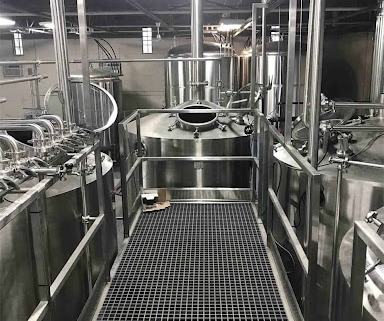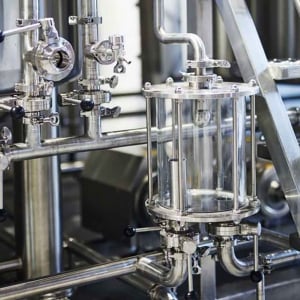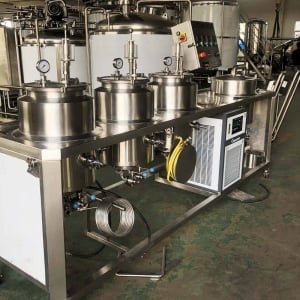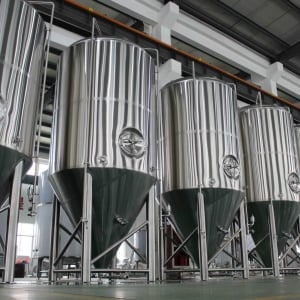Electric Beer Brewing System
Brewing beer at home or on a commercial scale is an exciting and rewarding process, and with the advent of electric beer brewing systems, the art of brewing has become even more accessible. Electric brewing systems offer precision, efficiency, and ease of use, making them an attractive choice for both beginners and experienced brewers. In this comprehensive guide, we’ll delve deep into the world of electric beer brewing systems, providing insights on equipment, the brewing process, layout and design, suppliers, and much more.
Overview of Electric Beer Brewing Systems
Electric beer brewing systems use electricity to heat and maintain specific temperatures throughout the brewing process. This system eliminates the need for gas burners or external heat sources, making it safer and more controllable for home brewers and small-scale commercial operations.
With precise control over temperature and the ability to automate parts of the process, electric brewing systems allow brewers to achieve consistent results with minimal intervention. These systems are available in various sizes, capacities, and configurations, and can be customized to fit the specific needs of the brewer.
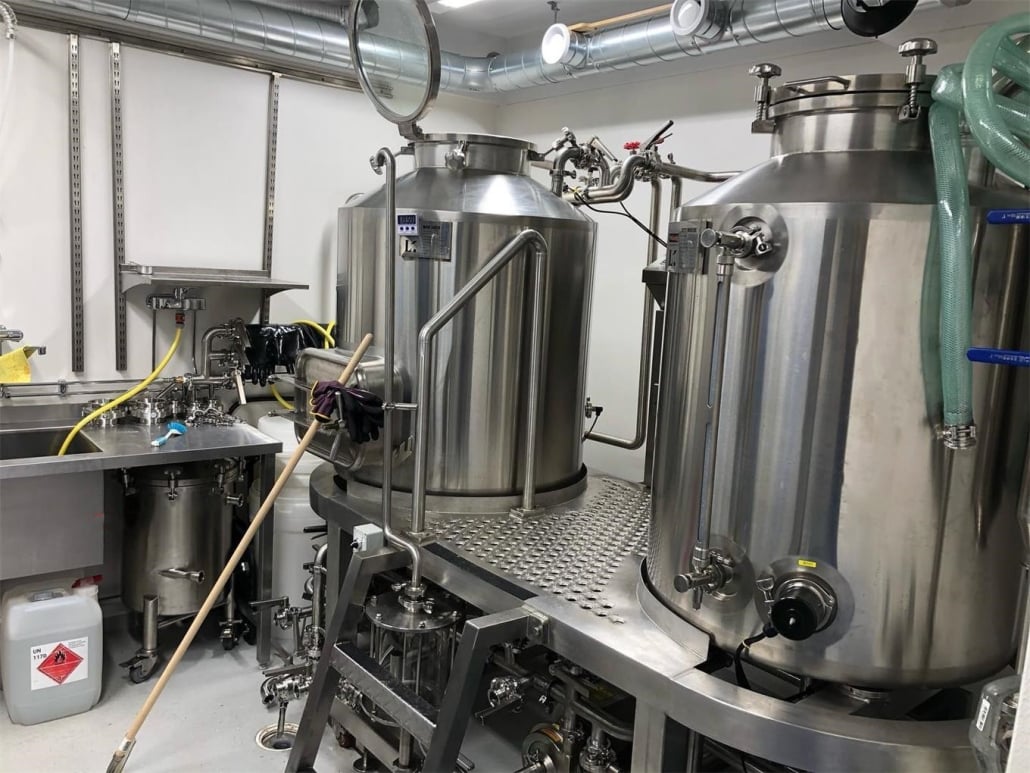
Electric Beer Brewing Equipment Guide
When selecting an electric brewing system, understanding the essential equipment is key. Below is a breakdown of the main components you’ll need for your electric brewing setup.
Main Components of an Electric Brewing System
- Brew Kettle: An essential component where the wort is boiled. Electric kettles come equipped with heating elements that allow precise control over the temperature.
- Mash Tun: This vessel is used for mashing grains, a process where the starches in the grain are converted to sugars. Electric mash tuns maintain a consistent temperature, which is crucial for proper sugar extraction.
- Hot Liquor Tank (HLT): The HLT is used to heat water for mashing and sparging. It works alongside the mash tun and boil kettle in a three-vessel system.
- Heating Elements: These are the heart of any electric brewing system. They provide the heat required for mashing, boiling, and sparging. Different power levels (e.g., 120V, 240V) are available, depending on the system’s size.
- Control Panel: An electric brewing system’s control panel allows you to monitor and adjust temperatures, timers, and pump speeds. Many systems come with built-in digital controllers for automation.
- Pump: Pumps help move liquids between vessels, making it easier to transfer wort during the brewing process.
- Fermenters: After boiling, the wort is cooled and transferred into fermenters. These vessels are where the yeast ferments the wort into beer.
Types of Electric Brewing Systems
Electric brewing systems vary in terms of design, capacity, and features. Below is a table summarizing the different types of electric brewing systems available on the market.
| Type | Description | Best For | Capacity Range |
|---|---|---|---|
| Single-Vessel System | Combines the mash tun and boil kettle into one unit. It is compact and user-friendly, making it a great choice for home brewers. | Home brewing | 5 to 10 gallons |
| Three-Vessel System | Features separate mash tun, boil kettle, and HLT, allowing greater control over each stage of the brewing process. | Commercial and advanced home brewers | 10 to 30 gallons |
| All-in-One Brewing | A fully integrated system that automates the brewing process. It comes with built-in heating, cooling, and even fermentation features. | Beginners and busy brewers | 5 to 15 gallons |
| Custom Modular System | Modular systems allow users to add or remove components based on their needs, providing flexibility and scalability as their brewing skills advance. | Advanced hobbyists and microbreweries | 20 to 100+ gallons |
The Brewing Process Using an Electric Beer Brewing System
The process of brewing beer remains the same whether you’re using a traditional gas setup or an electric brewing system. However, electric systems add more precision and control over the process. Here’s a breakdown of the typical brewing steps:
1. Heating Water
The process starts with heating water in the Hot Liquor Tank (HLT) or directly in a brew kettle. In electric systems, heating elements make this step more efficient, as temperatures can be dialed in precisely.
2. Mashing
Once the water reaches the desired temperature, it is transferred to the mash tun (or used directly if using a single-vessel system). The grains are added to the water, and the heat converts the starches into sugars. Electric systems can maintain the exact temperature required for the mash, ensuring consistency.
3. Sparging
After the mash, sparging takes place, where additional hot water is poured over the grains to extract all remaining sugars. Electric systems control the sparging temperature effortlessly.
4. Boiling
The wort (the liquid extracted from the mash) is then boiled in the brew kettle. Hops are added during this stage to balance the sweetness of the wort with bitterness. Electric systems allow for a vigorous and consistent boil.
5. Cooling
Once the boil is complete, the wort needs to be cooled before fermentation. Electric systems often include integrated cooling mechanisms or are compatible with wort chillers.
6. Fermentation
The cooled wort is transferred to a fermenter where yeast is added. Over several weeks, the yeast converts the sugars into alcohol, resulting in beer. Electric systems can even automate the transfer and monitor the fermentation process.
Design, Layout, and Customization Options for Electric Brewing Systems
Choosing the right design and layout for your electric brewing system is crucial for optimizing space and workflow. Below is a guide on how to plan your setup based on available space and design preferences.
| Factor | Description | Recommendation |
|---|---|---|
| Capacity | The size of your system will depend on how much beer you intend to produce. | Homebrewers may prefer 5-15 gallons; small commercial operations may go up to 100 gallons. |
| Space Requirements | Electric systems are generally more compact than gas-based systems, but you’ll still need room for vessels, pumps, and fermentation equipment. | Ensure enough space for all components plus a safety margin for ease of movement and ventilation. |
| Design | Some systems come as a sleek, all-in-one design, while others are modular, allowing you to add or remove components. | Choose modular if you want the flexibility to upgrade. All-in-one systems are ideal for space-limited setups. |
| Customization Options | Custom systems allow you to pick and choose components, such as different heating elements or control panels, based on your brewing needs. | Customization is best for advanced brewers or commercial setups looking for specific features. |
Suppliers and Price Range for Electric Beer Brewing Systems
The cost of electric brewing systems varies significantly depending on the type, capacity, and level of automation. Here’s a table to help you understand the price range and suppliers available in the market.
| Supplier | Type of System | Price Range (USD) | Capacity |
|---|---|---|---|
| Brewtech Systems | Modular Systems | $1,500 – $6,000 | 10 – 50 gallons |
| Grainfather | All-in-One Systems | $900 – $2,800 | 5 – 15 gallons |
| Ss Brewtech | Commercial Brewing Systems | $3,000 – $15,000 | 20 – 100 gallons |
| Spike Brewing | Custom Brewing Systems | $2,000 – $10,000 | 5 – 30 gallons |
| Electric Brewery | DIY and Custom Systems | $1,000 – $8,000 | 5 – 50 gallons |
Installation, Operation, and Maintenance of Electric Brewing Systems
Operating an electric beer brewing system is straightforward, but proper installation and maintenance are vital for efficiency and longevity. Here’s a table detailing the installation, operation, and maintenance considerations.
| Step | Details |
|---|---|
| Installation | Most systems come with installation guides. Ensure proper ventilation, electrical wiring, and space planning. Consider professional installation for high-capacity systems. |
| Operation | Operating an electric system is usually as simple as setting temperatures and timers via the control panel. Automation features reduce the need for constant supervision. |
| Maintenance | Regular cleaning of the heating elements, pumps, and vessels is necessary. Annual checks of the electrical components ensure the system remains in optimal condition. |
Choosing a Supplier for Your Electric Brewing System
Selecting the right supplier for your electric brewing system can significantly impact your brewing experience. Here’s what to consider when comparing suppliers.
| Factor | Why It Matters | What to Look For |
|---|---|---|
| Reputation | A supplier’s reputation indicates the quality of their products and customer service. | Look for reviews and feedback from other brewers. |
| Customization Options | Some suppliers offer more customization than others, which may be important if you have specific brewing needs. | Ensure the supplier offers customization if needed. |
| Warranty and Support | A good warranty ensures your system is protected, and ongoing support helps with troubleshooting. | Choose suppliers with comprehensive warranties and support. |
| Price | Price can vary greatly, but cheaper isn’t always better. Consider the quality of materials and components before making a decision. | Compare pricing but prioritize quality over the lowest price. |
Advantages and Disadvantages of Electric Beer Brewing Systems
Electric brewing systems have a lot to offer, but they also come with some trade-offs. Here’s a comparison of the advantages and limitations.
| Advantages | Disadvantages |
|---|---|
| Precise temperature control | May require significant electrical power |
| Safe for indoor brewing | Initial cost can be higher than gas setups |
| Compact and space-efficient | Some systems may not be as powerful as gas |
| Automation makes the brewing process easier | Requires regular maintenance of electrical parts |
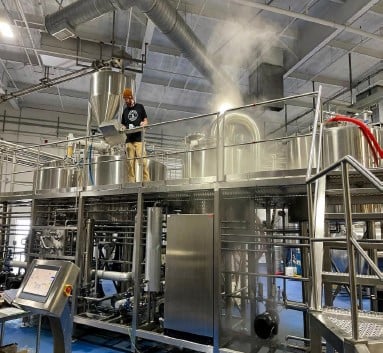
FAQ
| Question | Answer |
|---|---|
| What is the best electric brewing system for beginners? | All-in-one systems like the Grainfather are perfect for beginners as they simplify the brewing process and offer a compact design. |
| Do electric brewing systems use a lot of power? | The power usage depends on the system’s size and heating element. Home systems typically use 120V or 240V, which is manageable for most homes. |
| How long does an electric brewing system last? | With proper maintenance, an electric brewing system can last many years. Regular cleaning and electrical checks are key to longevity. |
| Can I use an electric system for commercial brewing? | Yes, many small breweries use electric systems. Larger capacity models are available for commercial brewing operations. |
Conclusion
Electric beer brewing systems offer home brewers and small-scale commercial brewers a convenient, efficient, and precise way to craft beer. From all-in-one systems for beginners to fully customizable setups for experienced brewers, there is a wide range of options available to fit different needs and budgets. By carefully considering factors such as capacity, layout, suppliers, and maintenance, you can select the perfect system for your brewing goals.

